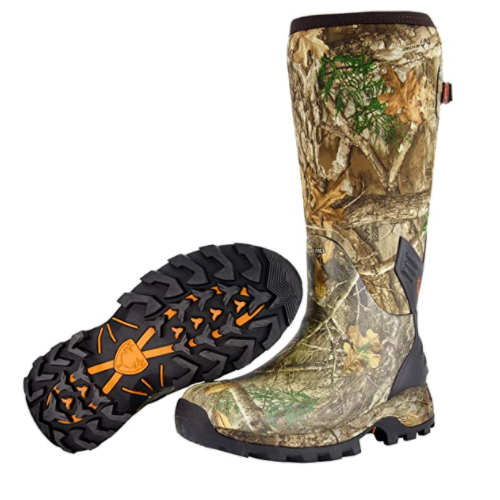
- REALTREE XTRA CAMO
- SECURE ELASTIC CUFF
- 100% WATERPROOF
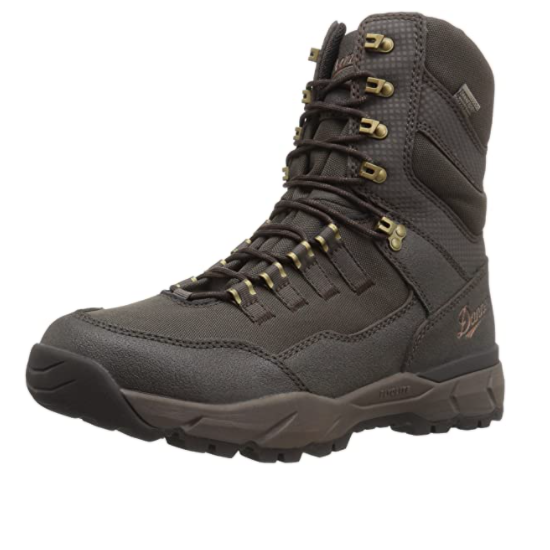
- 100% leather and textile
- Imported
- Rubber sole
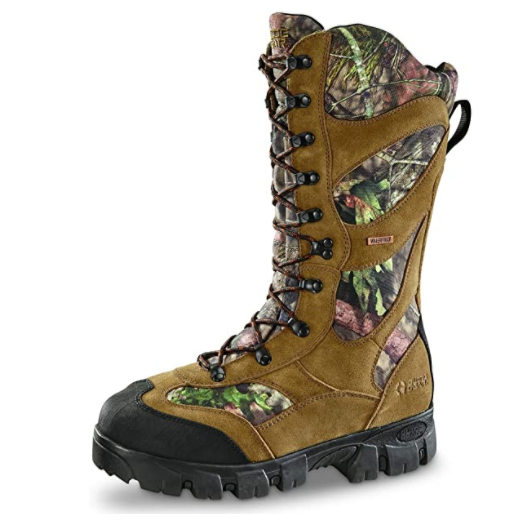
- Rubber sole
- Color: Mossy Oak
- Department : Mens
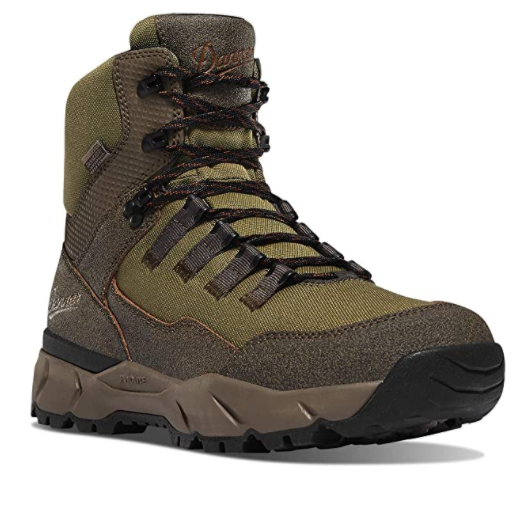
- Color: Brown/Olive
- Imported
- Rubber sole

- Imported
- Rubber sole
- 50% Neoprene
Choose the Best Turkey Hunting Boot
Customer’s Choice: the Best Rated Turkey Hunting Boots
2 users answered this survey. Please help us improve this review!
It’s that time of year again! The leaves are changing color, the air is getting cooler, and turkey season is just around the corner. If you’re like most hunters, you’ll be looking for the best turkey hunting boots to help you bag your next bird. In this blog post, we will discuss the different types of boots available and what to look for when purchasing a pair. We’ll also provide a few tips on how to care for your new boots. So whether you’re a seasoned hunter or just starting out, read on to learn more about the best turkey hunting boots!
Table of Contents
HUNTSHIELD Men’s Neoprene Muck Boot
 The HUNTSHIELD boot is just the thing for any man that wants comfort, warmth, and dryness in his life. Slip them on when heading outside to take in the winter wonderland or wear them at home with your favorite TV show.
The HUNTSHIELD boot is just the thing for any man that wants comfort, warmth, and dryness in his life. Slip them on when heading outside to take in the winter wonderland or wear them at home with your favorite TV show.
The only way this neoprene muck boot can get any better is if you’re wearing it while kicking back by the fire with some hot cocoa in hand! With so many great qualities, not to mention they’re waterproof and smell-free soft fleece lining makes these boots irresistible!
Danner Men’s Vital Boots
 The pinnacle of cold-weather performance, the Danner Mountain Light II is perfect for treacherous winter treks. 100% leather and textile construction keep your feet dry and comfortable, while abrasion-resistant materials fend-off wear and tear.
The pinnacle of cold-weather performance, the Danner Mountain Light II is perfect for treacherous winter treks. 100% leather and textile construction keep your feet dry and comfortable, while abrasion-resistant materials fend-off wear and tear.
Thick insulation and a moisture-regulating mesh lining keep your feet warm even in subzero temperatures, while the TPU heel clip ensures stability on icy terrain. Specialized features like the ghillies lacing system and locking speed hooks make it easy to get these boots on and off quickly, even when your hands are numbed by cold.
Guide Gear Giant Timber II
 Keep your feet toasty all day with this Guide Gear Insulated Hunting Boots. With 1400 grams of insulation, you’ll be able to trek through the coldest weather without experiencing any frosty toes.
Keep your feet toasty all day with this Guide Gear Insulated Hunting Boots. With 1400 grams of insulation, you’ll be able to trek through the coldest weather without experiencing any frosty toes.
Not only do these boots keep you warm, but they’re also scent-free and waterproof so you can avoid those pesky odors and stay dry on your hike. With padded support and moisture-wicking fabric, these boots will make your next outdoor adventure a breeze.
Danner Men’s Vital Trail
 Step into a pair of Danner hunting boots and experience the difference. Designed with input from some of the world’s top outdoor enthusiasts, these boots are built to tackle any terrain.
Step into a pair of Danner hunting boots and experience the difference. Designed with input from some of the world’s top outdoor enthusiasts, these boots are built to tackle any terrain.
The abrasion-resistant leather and textile upper are tough and durable, while the Lock and Load lacing system ensures a secure fit. You’ll appreciate the grippy rubber sole for stability on uneven ground, as well as the enhanced support and stability offered by the TPU heel clip. And when it comes time to lace up quickly and quietly, you’ll love the locking speed hooks.
LaCrosse AeroHead
 You need a boot that can keep up with you. A boot that is tough, durable, and comfortable. A boot that won’t let you down. That’s what LaCrosse offers you — the best rubber boots on the market.
You need a boot that can keep up with you. A boot that is tough, durable, and comfortable. A boot that won’t let you down. That’s what LaCrosse offers you — the best rubber boots on the market.
Buyer’s Guide
Why Do You Need Special Boots For Turkey Hunting?
Many hunters think that any old pair of boots will do when turkey hunting, but this is not the case. In fact, you need boots that are designed specifically for turkey hunting. Here’s why:
- Turkey hunting is a lot different than deer hunting. While deer can be hunted in any terrain, turkeys are more particular about where they live and what type of ground they prefer to walk on. This means that you need boots that will let you move easily through the woods and that will provide good traction on the various types of terrain you might encounter.
- When you’re turkey hunting, you need to be quiet. If your boots make a lot of noise as you walk, this will spook the turkeys and ruin your hunt! You want boots that are quiet when walking on different types of terrain so that they don’t scare away any birds before you have a chance at them.
- Turkey hunting is also a lot more physically demanding than deer hunting. You may be hiking for miles through the woods, and you’ll also be running after turkeys to get within shooting range. That’s why you need boots that are comfortable and supportive.
- Turkey hunting also usually involves a lot of sitting in one spot for hours at a time. The best turkey hunting boots will be comfortable enough to sit in all day long without causing any pain or discomfort, and they’ll have good ankle support so you don’t end up with sore ankles by the end of your hunt!
- Color is also important when it comes to turkey hunting boots. You want a boot that is going to blend in with the surroundings and make you less visible to the turkeys. This is especially important if you’re hunting in an area where there are a lot of leaves on the ground, as turkeys will be able to see you more easily if you’re wearing boots that are too bright.
- In addition, turkey feathers can be very sharp, and they can easily tear up your clothes or skin if you’re not wearing the right type of clothing or boots.
So as you can see, it’s important to wear boots specifically designed for turkey hunting when heading out into the wild in pursuit of these wily birds. Make sure to do your research and find a pair of boots that will meet all of your needs, and you’ll be able to enjoy a successful hunt.
What To Look For In Best Turkey Hunting Boots
One of the most important parts of any type of hunting is choosing the right equipment. Boots for turkey hunting are made specifically for the type of hunting and terrain that is common. There are a few different things that you will want to consider when purchasing boots for turkey hunting.
Know Your Terrain
The first step in choosing the best turkey hunting boots is to determine what type of terrain you will primarily be hunting in. It is important because not all boots are made the same.
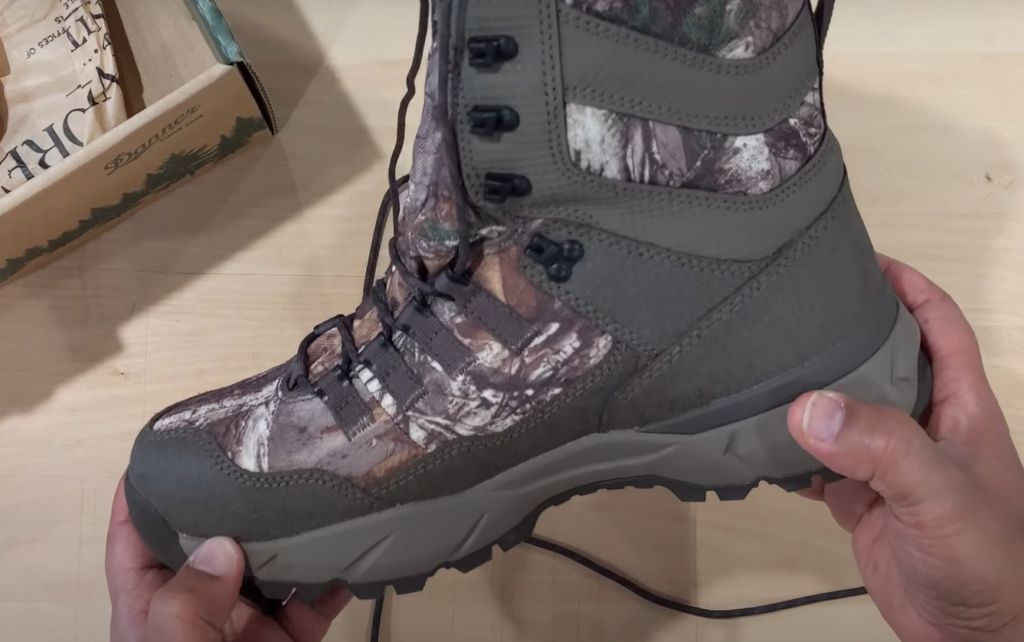
The three main types of terrain you will be hunting in are grassy fields, wooded areas, and swamps or marshlands. Each terrain has its own challenges which require a different type of boot to meet them.
- Grassy field terrains usually do not present many problems for turkey hunters. The ground is generally flat and easy to walk on. For this type of terrain, a lightweight boot with good traction would be the best option. Moreover, the boots should be waterproof, because when you are hunting turkeys in tall grass, it is common to encounter wet areas.
- Wooded areas are more difficult because of the uneven ground and roots sticking out of the ground. A heavier-duty boot with ankle support is needed for these conditions. In addition, the boot should also be waterproof and have good traction.
- Swamps or marshlands are the most difficult terrains to hunt in. The ground is often wet and muddy, making it hard to walk on. For this type of terrain, a waterproof boot with perfect traction is needed. Also, the boot should be lightweight because you will be moving around a lot.
If you choose the wrong boots for the terrain you are hunting in, it could result in serious injury or even death. A turkey hunter needs to be able to move quickly and quietly in order to surprise their prey. If they cannot do this because of poor footwear choices, then it defeats the purpose of turkey hunting altogether.
For this reason, it is important that you think about what type of terrain you will be hunting in before purchasing a pair of boots.
If you are unsure of what kind of terrain you will be hunting on, then go with the heaviest and strongest pair available. You can always switch out your lighter-weight or thinner soled boots later if needed.
The right pair of turkey hunting boots will make all the difference in the world. Make sure you do your research and choose wisely.
Now that you know what type of terrain you will be hunting in, it is time to choose the best turkey hunting boots.
Shop by the Season
When deciding on the perfect turkey hunting boots for you, it’s important to take into account the time of year that you’ll be hunting in most often. This will help narrow down your search and make it easier to find the right pair of boots.
Turkey hunting boots must line up with what you’ll be doing in the field at that time of year. It should be taken into account because the type of insulation a boot has, the height and weight, and even the color can all be factors.
- In winter, the colors that are popular for turkey hunting camouflage are green and brown. However, hunters in states with a longer season often switch to wearing black boots as the leaves have fallen off of the trees and there is less concern about blending in. Winter boots should be insulated and waterproof.
- In early spring when temperatures can vary greatly during the day, you’ll need a boot with good insulation and ventilation. A lightweight waterproof boot would be ideal for this time of year. The colors black, green, and brown are all popular choices as they work well in a variety of environments.
- In the late spring and summer months when it’s hot during the day but cool at night, you need a breathable light-weight boot with good ventilation. These boots are often called turkey hunting sandals as they have a breathable material, but the sole of the boot is thick and tough enough to keep you from getting cut on rocks or sticks in the woods.
- For fall hunts when it’s dry outside and there isn’t much snow cover, a lightweight waterproof boot is ideal. The colors green, brown, and black are all popular choices as they work well in a variety of environments.
- In late autumn or early winter when temperatures are below freezing for an extended period of time, you’ll need a heavier insulated boot. The height should also extend up above your ankle to keep out the cold weather. In milder climates, a lightweight boot with less insulation will do.
You also need to think about whether you’re hunting during wet weather or dry conditions. If it rains often where you go turkey hunting, camo boots made of waterproof material are a good option. If the ground is dry, boots that are water-resistant but not waterproof may be a better choice
The color of your boots is also important to consider. In general, it’s best to avoid wearing bright colors when hunting so you don’t give away your position. However, for turkey hunters there is an exception: turkeys can see color very well, so wearing a bright boot can actually help you get closer to them.
You can often find camouflage boots in green or brown for these seasons, but some people prefer black boots year-round.
Material
The next thing you’ll want to consider is the material of your boots. The most common materials that manufacturers use to construct hunting boots are leather and nylon, but there are actually a few other options available.
- Leather – Leather is one of the most popular materials for making hunting boots. It’s highly water-resistant and breathable. The main reason why many people still choose leather is that it has a tendency to be more durable than nylon. It also protects your feet from moisture a bit better than nylon. Moreover, leather is a natural insulator, so it will help keep your feet warm in cold weather. The only downside to leather is that it can be heavy when compared to other materials like nylon or rubber.
- Nylon – Nylon is another very popular material used in the construction of hunting boots. Nylon boots are generally less expensive than leather boots and they’re also lighter in weight. In addition, nylon hunting boots tend to be more comfortable than leather. Finally, they provide better ventilation to keep your feet dry and cool on hot days. However, they’re not as durable as leather and they don’t provide quite as much insulation. They are also typically not as effective at keeping your feet dry.
- Rubber – Rubber boots are a bit different than the other types of hunting boots that we’ve discussed so far in this guide. They don’t have laces or zippers and they typically reach up to around mid-calf height. The benefit of rubber is that it’s completely waterproof and it’s also very durable. The downside is that rubber boots can be quite heavy and they don’t provide much insulation, so they’re not ideal for colder weather.
There are also other materials to consider. Leather, nylon, and rubber are the most common, but some manufacturers also use canvas, suede, or even synthetic blends of different materials.
Also, consider the climate where you’ll be hunting. If you’re in a colder climate, you’ll want to choose a material that will keep your feet warm, such as leather. And if you’re in a warmer climate, nylon may be the better option because it helps keep your feet cool.
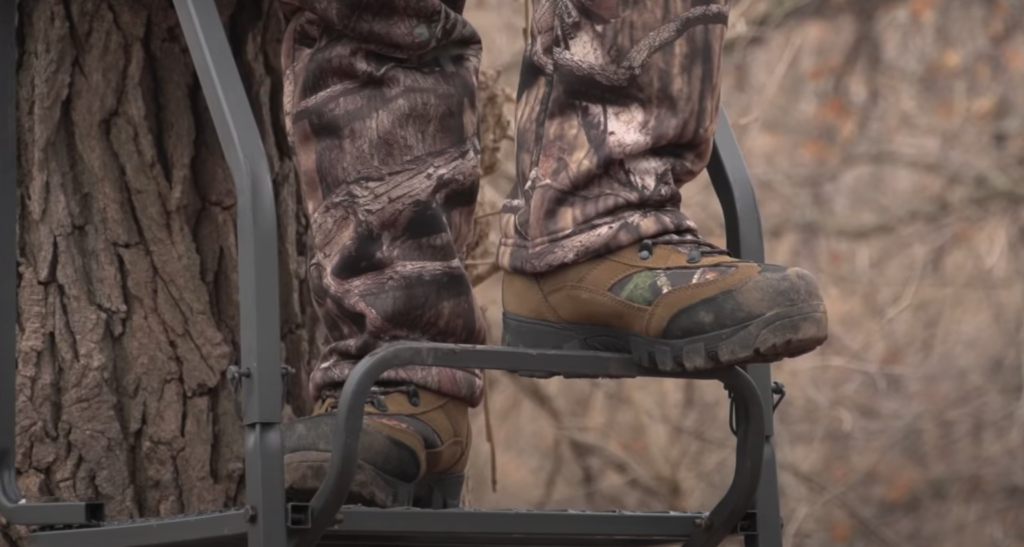
The material also affects the price of the boots. Leather is typically more expensive than rubber, for example. Moreover, different materials may require different care and maintenance. If you choose a material that needs to be treated or waterproofed, make sure you’re willing to put in the extra work.
So, what’s the best material for turkey hunting boots? That depends on your individual needs and preferences. Most people find leather to be a good option for turkey hunting, but nylon is also a popular choice.
Insulation
Another important factor to consider is insulation. Waterproof boots are usually insulated so they will trap heat and prevent moisture from passing through them, which can be crucial if you go hunting during cold weather.
The best way to find out how insulated a boot is by reading its description. You can find insulation ratings on most boot manufacturers’ websites. They’ll look something like this: 500g of Thermolite® EcoMade™ Insulation.
Some high-end models have removable insulation that allows you to adjust the amount of insulation you need for a given hunt. This is a great feature if the weather is changing throughout the day or if you’re going to be hunting in different types of terrain.
Many boots also come with thermal liners, which are special fabrics that help keep your feet warm. Thermal liners can be removed and washed in a washing machine and hung to dry.
The most common insulation materials used by boot manufacturers are:
- Thinsulate – It is a lightweight insulation that is made up of tiny microfibers. It can be compressed, which makes it a good option for boots that need to be packed down small.
- Primaloft – This insulation is very effective at trapping heat and comes in different weights depending on how much warmth you need.
- Wool – Wool is a natural fiber that is used for insulation. It is breathable and can be packed down small, which makes it a great option if you need to pack your boots in a backpack or stuff them into the pockets of your hunting clothes.
The most common thermal lining materials are:
- Fleece – A lightweight material that traps heat very well and dries quickly.
- Thermal Fabric – A fabric that is specifically designed to keep you warm. It is usually made from a synthetic material, such as polyester, and can be compressed without losing its insulation properties.
- Down – This is an extremely effective insulation material that comes from ducks or geese. Down is lightweight and compressible, but it can be damaged if it gets wet.
The amount of insulation you need will depend on the conditions where you hunt and how much time you spend in a single location.
Let’s delve into the details! There are some important considerations for insulation:
- Insulation ratings are measured in grams (g) or milligrams (mg). The higher the number, the better insulated your boots will be.
- A common mistake is to think that insulation only matters for cold weather hunts, but it’s important year-round because heat can escape from your feet just as easily in warm weather too!
- Thermal liners and removable insoles are usually made from synthetic materials like polyester or nylon. Some manufacturers use wool, but this can be scratchy on bare skin and isn’t as effective at keeping you warm.
- If your boots don’t have an insulation rating, it means they aren’t insulated! These tend not to be very comfortable in the winter months unless worn with thick socks.
- If you’re looking for a boot with removable insulation, make sure the insulation is high quality so it will stay in place when removed. Look for 600 grams or more of insulation for cold weather hunts.
Now that you know all about insulation, let’s move on to waterproofing!
Waterproofing
The problem with most hunting boots is that they are not waterproof. Waterproofing is a must if you’re going to be out in the field. It doesn’t matter what kind of boot it is, but you need something that will keep your feet dry.
Most of the boots on the market today are not waterproof. Even if they say that they are, it’s usually not true. They may be water-resistant to a certain degree, but if you get them wet, your feet will be soaked. This is why you need to make sure that you buy a boot that is actually waterproof. This will help keep your feet dry, even if you walk through a creek or stream.
Gore-Tex is the most popular and widely used waterproofing material on the market today. It’s known for its durability and ability to keep moisture out of your boots while keeping them dry inside as well.
Gore-Tex is also very breathable, which means that you won’t be sweating all day long when wearing this type of boot. Moreover, it can be easily cleaned with soap and water if needed.
If your boots are not waterproof, you can always purchase a water-resistant spray to keep them that way. However, this is not as good as having a boot with Gore-Tex because the water-resistant coating will eventually wear off.
In addition, not all Gore-Tex boots are created equal. Make sure you do your research to find the best Gore-Tex boot for your needs.

You should also know that waterproof boots require more maintenance than non-waterproof boots. For example, you will need to treat the leather with a waterproofing agent every few months in order to keep them in good condition.
If you plan on using your hunting boots in very wet conditions, then I would recommend going with waterproofing. However, don’t expect them to last forever because they won’t! The coating will eventually wear off over time and need replacing (just like any other type of boot).
You may want to consider purchasing a new pair of waterproof hunting boots every couple of years, especially if you use them a lot.
So if you’re looking for a good pair of turkey hunting boots, make sure that they are really waterproof. It’s one of the most important features that you should look for.
Grip and traction
The next important consideration is grip and traction. When turkey hunting, you will likely be walking through a variety of terrains, from hard-packed dirt to wet marshes. You need boots that will provide a good grip on all surfaces so you can move with confidence.
The tread pattern is important here. Many boots feature aggressive tread patterns that are designed to give you traction in wet and slippery conditions.
If you’re going to be doing a lot of walking through water, look for boots with waterproofing capabilities. The trade-off is that it will be noisier as you walk (more on this later). If you plan to hunt in dry or hard-packed areas only, a less aggressive tread will be fine.
For the best grip, look for boots with a Vibram sole. This is a quality material that will provide good traction in most situations. Some models also have lugs or studs added to increase the grip even more.
Traction also depends on the quality of your boots, so make sure you buy a pair that is durable and will last.
Sole can be made of various types of material such as rubber, leather, or synthetic.
The sole is an important feature because it provides protection against sharp objects like rocks and twigs. If you’re walking through thick brush with lots of thorny plants on the ground then having a tough sole can save your feet from getting cut up! You might also want to consider getting some gaiters (ankle covering) when it comes time for hunting season.
The sole of the shoe is where most of its support and cushioning come from, so make sure that you’re choosing a pair with good quality materials here! The best soles are made out of thick rubber or leather because they provide more cushioning and protection against sharp objects.
Additionally, look for boots with a good amount of cushioning. This will help to protect your feet from the impacts of walking on hard surfaces.
Comfort and Fit
When looking for the best turkey hunting boots, comfort and fit are key considerations. You’ll want to find a pair of boots that fit well and feel comfortable when you wear them.
First, check the fit. Make sure you have a good-fitting pair. If you are having trouble finding the perfect fit, try going up a size to give yourself more room.
Keep in mind that turkey hunting boots should be tight and snug on your feet. So, if you are uncomfortable with a tight boot, it may not be the best choice for you.
Second, check the comfort of the boots. Make sure the boots are comfortable for you to wear. For example, if you have wide feet, try going up a size or two in length and width to compensate for this.
Also, make sure that your turkey hunting boots have good support on the bottom of your foot so that they won’t hurt when walking over rough terrain.
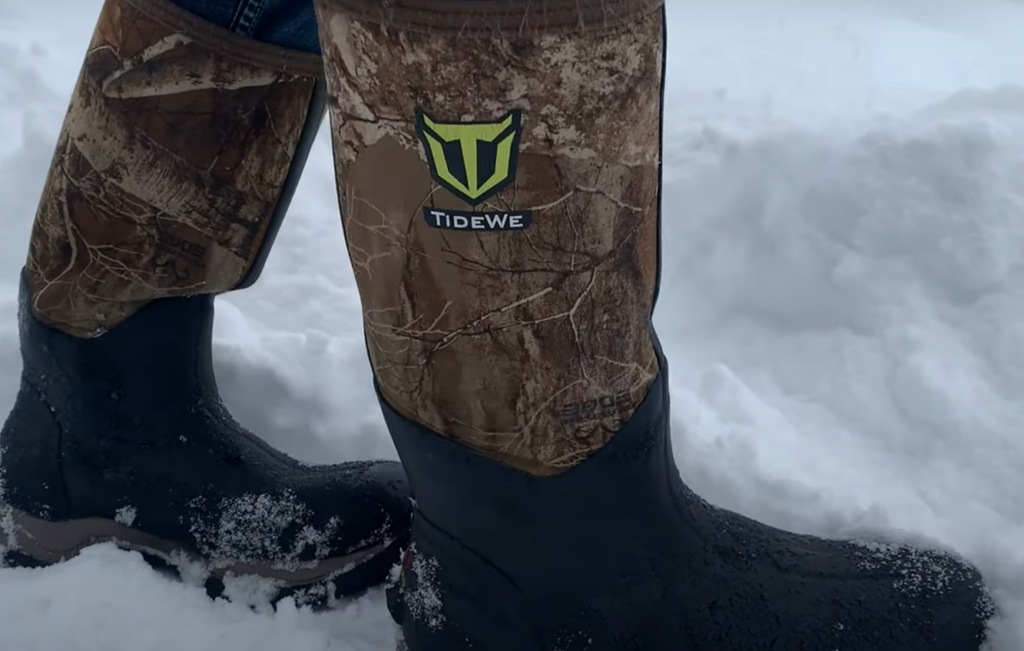
Third, try on the boots and walk around in them. If you plan to do a lot of walking while turkey hunting, you’ll want to make sure the boots can handle it.
Fourth, check the insulation properties of the boots. If you are planning to hunt in cold weather, you’ll want something that will keep your feet warm as well.
When it comes to comfort, look for well-padded insoles that provide cushioning against shocks caused by walking or running on uneven terrain. Some hunters prefer lighter-weight hunting boots which are easier to move around in, while others prefer a more supportive boot. It’s important to find the right fit and level of comfort for you when it comes to turkey hunting boots.
FAQ
What color should you wear while turkey hunting?
Turkeys have great vision and can see in color, so it’s important to wear clothing that blends in with your surroundings. Earth tones are generally the best choice when hunting turkeys. Camouflage patterns also work well. Bright colors should be avoided as they will stand out to turkeys.
What type of boots should you wear while turkey hunting?
There is no one perfect answer to this question, as different hunters have different preferences. However, it is important to choose boots that are comfortable and provide good support. Gore-Tex boots are a good option, as they will keep your feet dry even in wet weather.
Are there any special tips for wearing boots while turkey hunting?
When wearing boots, it is important to make sure they are broken in properly. This will help avoid blisters and other discomforts during your hunt. Additionally, you may want to consider applying a layer of scent-free camouflage cream to your feet before putting on your boots. This will help prevent odors from escaping your boots.
Useful Video: Best Rubber Hunting Boot 2020 – Top 5 Rubber Hunting Boots Reviews
Final Thoughts
Turkey hunting is a popular sport, and the right gear can make all the difference in the success of your hunt. Make sure you have a good pair of boots to keep you comfortable and safe while you’re out in the field.
The best turkey hunting boots should be also lightweight and durable. You also want them to be both waterproof and breathable so that your feet stay dry throughout each hunt.
We’ve listed some of our favorite turkey hunting boots for you to check out, so be sure to take a look and see which ones would work best for you.
We hope you found this guide helpful, and that you have a successful turkey hunting season! Be sure to check out our other hunting guides for more tips and information on how to make the most of your next hunt.
Thanks for reading!

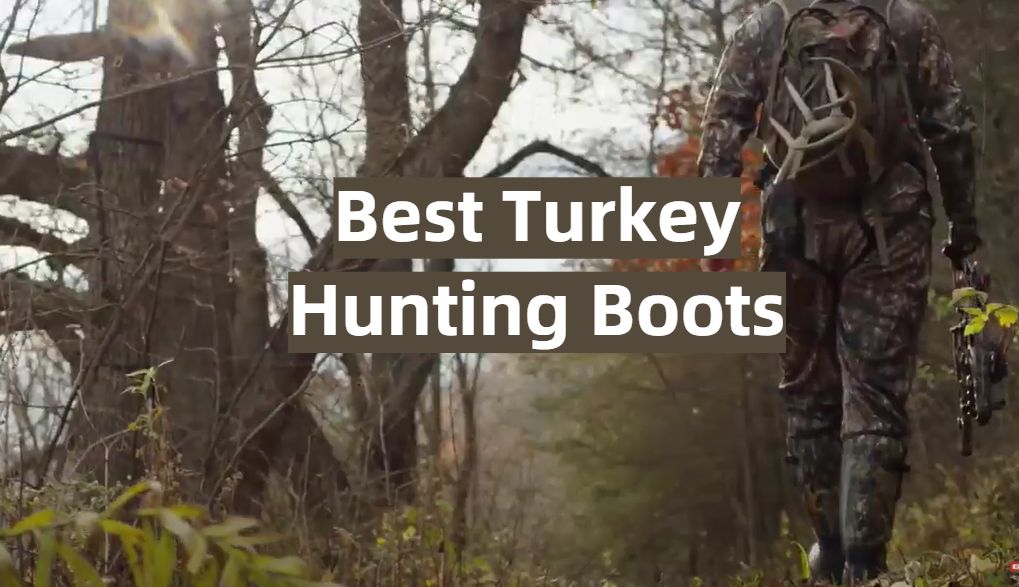




Leave a Reply